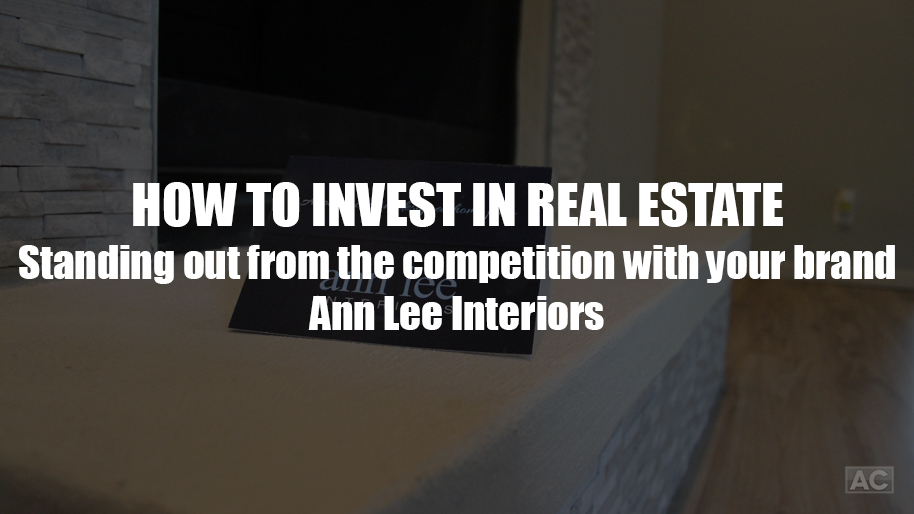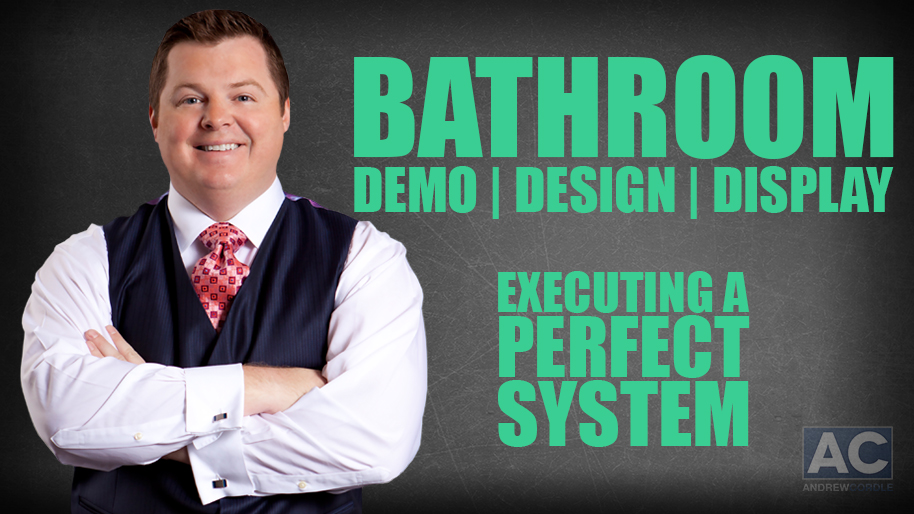
When teaching our students how to invest in real estate, one focus is our brand. When Ann Lee was founded, as with any new business, there was a multitude of decisions we had to make. But one thing was crystal clear. We wanted our buyers to have a different experience. We wanted to set ourselves apart in the marketplace. Because frankly, the majority of flippers were all beginning to look the same. It was getting extremely boring to be a flipper and have your product stand out. But we changed that quickly! So we created a brand called “Ann Lee Interiors”. We built our own army of dedicated agents, lenders, contractors and employees who follow and promote our brand. As soon as a potential buyers walks through the front door, we wanted to give them a unique buying experience! We take our buyers on their own custom journey. And during that journey, every single small detail is important. It’s the little things that make a difference. Things like custom Ann Lee labeled house keys, custom brand postcards, and small customized pop-up promotional cards spread throughout the home. When you’ve built your brand, you’re in-turn, customizing every single flip! When you customize the home and the home-buying experience, you have just ensured that your potential buyers feel special. Your product, in turn, stands out from your competitors. You may ask, “what sets Ann Lee Custom Homes apart from their competitors? Most real estate investors would never share their secrets with the public, but we’re different! We want to share our wealth of knowledge to help make you more successful and profitable. While I do not wish to bog you down with details right now, there are 5 simple ways to ensure that your house stands-out: Be different from your competitors – It’s not rocket science! Every buyer has an mental picture and checklist of exactly the type of house that they want. Make your investment stand-out by giving the potential buyer what they want instead of what you want or is the least expensive. It needs to look like a custom designed home rather than a home designed by a contractor or narrow-minded investor! Be aware of how the potential buyer perceives you – Our buyers perceive us as custom home designers rather than flippers/investors wanting to earn a quick buck and move onto the next investment without putting any thought or pride into their flip. Our buyers see our homes as ones that they are eager and excited to purchase rather than a house that they are just “agreeing” to buy.So again, ask yourself this: “How does my potential customer perceive me? Do they perceive me as a ‘flipper’ or as a ‘custom home designer’?” Tile is “art” not “flooring” Most investors consider tile or laminate floors simply as “flooring.” We’re different –...
Read More »

We’re on the back-end of our “Finding Funding” series and today I’m going to discuss my personal favorite avenue of funding. The Joint Venture Agreement, referred to in this article as a “JVA.” I use JVA agreements on the majority of my flips. It’s my favorite avenue of funding for my “buy, fix, sell” properties. This is because it means that there’s literally ZERO monies coming out of MY pocket. You might be wondering how that’s possible? I structure my JVA’s so that the lender pays 100% of out-of-pocket costs. He pays the earnest money, the purchase, the closing costs, insurance, utilities, all construction rehab costs…everything! I prefer doing JVA’s as it provides me the ability to do multiple concurrent deals at the same time without a lot of outgoing funds. For instance, I can do five JVA’s at the same time and not have it affect my pocketbook. There is literally zero out of pocket expenses. But if I were to do five HML (hard-money lender) deals at the same time, I would require a huge amount of upfront capital! I’d have to put up 20% for each house as a down payment on the loan. In addition, I’d have to pay all earnest monies, closing costs, insurance, utilities, the monthly payment, and don’t forget that I’d have to also front all of the construction funds! This would equate to hundreds of thousands of dollars, if not more. Obviously, with JVA’s, one can grow at a rapid pace without incurring all of the risk. It’s win-win! How does one structure a JVA? Well, there’s two ways to do this but In both scenarios, there is a JVA agreement in place: The JVA lender holds the title to the property – and I’m ok with this as long as we have a JVA in place. The JVA contract is between the lender and me and dictates that upon sale, all previous expenses are reimbursed and the remaining profits are divided per a previously agreed-upon split. The most common split is 50/50, but I have worked with JVA lenders who give me a 70/30 split! But I’ve never agreed to pay more than 50% of the profit to the lender. I (the investor) hold the title and the JVA lender takes first lien with the mortgage and note. At closing, an attorney or title company will record a mortgage and note for the property so that when the property is sold and before any monies are taken out, the mortgage gets paid off first. JVA lenders prefer experience so you should gain some before you attempt a JVA. It’s not likely for someone to loan you money without a proven and successful track record. The JVA lender absorbs the majority of the risk during a JVA flip. It’s a high risk yet high...
Read More »

Ever heard the popular phrase, “if you fail to plan, you’re planning to fail”? Do you have a real estate flipping business plan? From my 10 years plus in the real estate investing industry, my guess would be that roughly half of all flippers do not have a real estate flipping business plan. And planning is paramount to reaching your real estate goals. Too many inexperienced flippers get into the business without a solid real estate flipping business plan. The Cable television flipping shows should bare some responsibility for fooling viewers that flipping is easy. Dont we all wish it was as easy as we see on television? I know that I do! I’d imagine that the cutting room floor is filled with the more monotonous, non-dramatic parts of the process like planning and budgeting! Because of the large amounts of money and capital involved in real estate, it’s that much more important that one has a real estate flipping business plan. A good plan also helps you convince others that you’re dead serious. So you might be wondering, what are the elements of a good real estate flipping business plan? Here are a few important must-haves: An Executive Summary – your one page business plan A Market Analysis – summary of your targeted locales and neighborhoods Your Flipper Bio – this informs your lenders, investors, and vendors about your business and yourself Organization and management – self-explanatory: Show that you’re organized Marketing and Sales Management – address your goals of buying low, selling high and your marketing plan Funding Plan – this is the numbers game/report for your potential lenders Financial Projections – analysis of future cash-flow For more free information to help you develop your real estate flipping business plan, visit www.andrewcordle.com ...
Read More »
In this video, Andrew shows you the advantages of postcards and the importance of “branding”. Ensure that your property stands out from your competition! ...
Read More »











